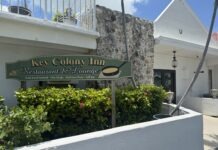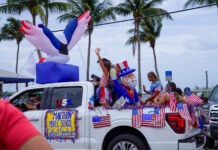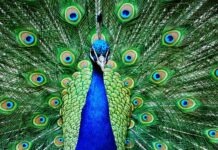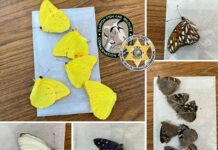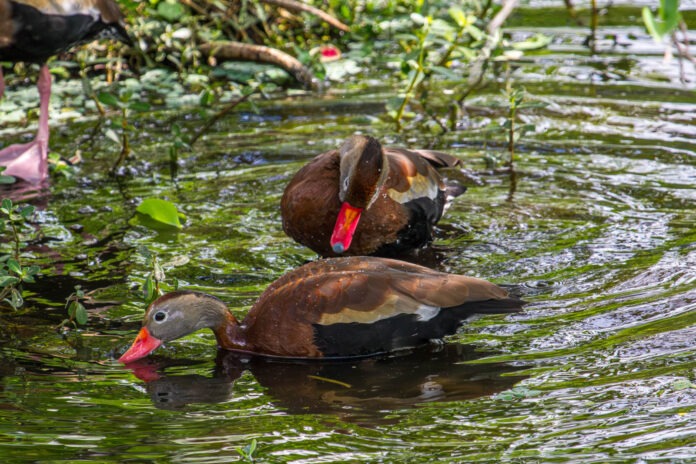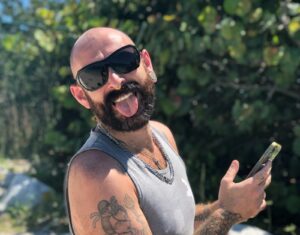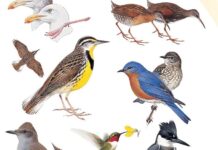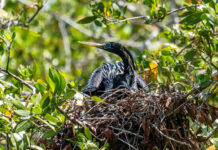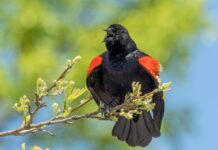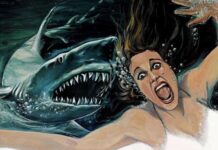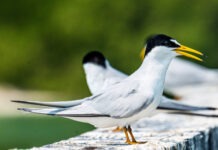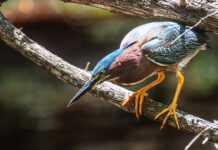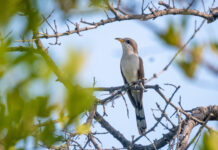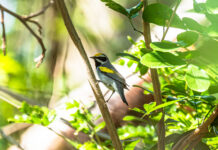It might have been smart to bring a raincoat. I realized this as Ellen Westbrook got into the car with a raincoat over her arm, because Ellen is one of those people who actually thinks about things ahead of time. It had been raining on and off all morning, mostly on, and the sky was still a battleship gray. But I’d looked on the radar and the tail end of the storm was almost to Key West, and I was impatient to get up the road.
My wife had gone to Marathon earlier in the morning for a meeting and had texted me that it was near whiteout conditions crossing the Seven Mile Bridge, that at times she could hardly see anything in front of her. She felt that if she was driving her old Miata, instead of our venerable CR-V, she might not have gotten there.
Summer storms never last that long in the Keys, and I’d already waited an hour or so for the thunder to stop, as the dog is not a fan and until it abated she declined to leave my side. I put the car into gear, because this minor period of dramatic inclemency was over. I believed this even as the sounds of persistent precipitation started thumping louder on the car roof.
The drive north actually wasn’t that bad. It would rain intensely for a while, then suddenly the windshield wipers would be squeaking across dry glass when it let up. Then there would be more rain.
Our destination was Grassy Key, where a neotropic cormorant — a slightly different species from our near-ubiquitous double-crested cormorants, about three-quarters the size of a double-crested, with a white, sideways V that bracketed the gape of its mouth – had been reported. It had been hanging out in the salt ponds for nearly a month. It was pretty much a gimme for anyone who made the effort to look for it.
As we passed the old KMart in Marathon, the parking lot was so flooded it looked as if the blue whale in the Wyland mural might take the opportunity to jump down and swim through the water for a while. At the airport, the grass next to the runway was also flooded, a series of big square ponds. I made a joke about how, if we stopped there on the way back, it would probably be full of ducks. (Marathon received over seven inches of rain from that storm.)
When we made it to Grassy Key, I pulled out my phone and looked at the radar. The west end of the storm kept replenishing itself, elongating the system and continuing to drag over Key West. It wasn’t going to stop in the Middle Keys any time soon.
We spent a couple hours scouring the salt ponds, walking around when the rain paused, hiding in the car to keep the camera dry when it didn’t. And there were a good number of birds – egrets, spoonbills, stilts, terns. There was even an out-of-season purple martin way high up in the clouds, and an out-of-season barn swallow way down low near the mangroves. But we couldn’t find the neotropic cormorant.
We went to lunch at The Wreck, sat outside because it was 75 degrees out and, after the wrecking ball of heat that came in last week, who knew when it wouldn’t suck to eat outside again? Then we went back to the ponds and continued not seeing the neotropic cormorant.
On the way home, we pulled onto the access road next to the airport and drove slowly through the deep puddles that had formed, trying to limit the truck’s wake. We stopped near the windsock. Through the front window we could see the pond was filled with birds, though the overwhelming majority of them were laughing gulls. Nearby, on what counted as the uplands in that situation, sat about a dozen-and-a-half ducks.
They weren’t usual-suspect ducks, though. They were black-bellied whistling-ducks. We climbed up into the back of the truck to get a better view over the barbed wire.
Black-bellied whistling-ducks are native to Central and South America. They were first seen in Texas in the early 1900s, but have since increased in numbers steadily.
They weren’t thought to breed in Florida until the late 1960s. The population is believed to have come from a combination of accidental migrants from Texas and escaped captive birds. They are very adaptable.
They have long legs and long necks, which gives them a more upright stature than most ducks. Males and females are basically indistinguishable. Besides the black bellies, they have brown backs, gray faces, and bright orange bills.
While sporadically common on the mainland – I tend to see them most often at water treatment facilities like Wakodahatchee and Green Cay Wetlands – they are pretty rare in the lower Everglades and the Keys. I’d never seen them in the Keys before, and when I checked eBird, there were only two or three other sightings here over the years.
Ellen said she’d seen them once, about a decade ago, when she was volunteering for the Key West Wildlife Center and someone had called in, worried about the fact that there were a bunch of ducks just standing around. Which is what ducks do when they are not flying or feeding.
As a species, they have some fun quirks. For instance, they primarily feed at night, with about 90% of their diet being vegetation and about 10% coming from snails and insects. They are thought to be lifelong monogamists, unless something happens to one of the mates. They used to be called black-bellied tree-ducks, because they nest in trees, but the name was changed for taxonomic reasons, as well as the fact that they don’t quack so much as whistle.
Despite their monogamist tendencies, they also practice brood parasitism on their own species, sometimes practicing something called “nest dumping,” where multiple females lay their eggs in another black-bellied whistling-duck’s nest. Ornithologists once found 101 eggs in a single nesting cavity, though only 38 of them hatched due to the fact that the parents, who share equal brooding responsibilities, could only sit on so many eggs.
Their chicks have a plumage pattern that seems to be equal parts zebra and bumblebee. When they travel as a family, they will move in a line, with one parent leading and one following.
How these ducks arrived in Marathon, I’m not sure. They are very rare in Cuba, where many of our accidental birds come from, and the rest of the West Indies. If there had been a big storm that came across the Gulf, I might have suspected them coming from Mexico, but looking at the weather radar later, the storm had pretty much materialized and blown up in scale just west of Key West. Which also makes it unlikely they were weather-driven down from the mainland.
Maybe they were just on a walkabout, compelled to go exploring in bad weather — just like Ellen and me.




